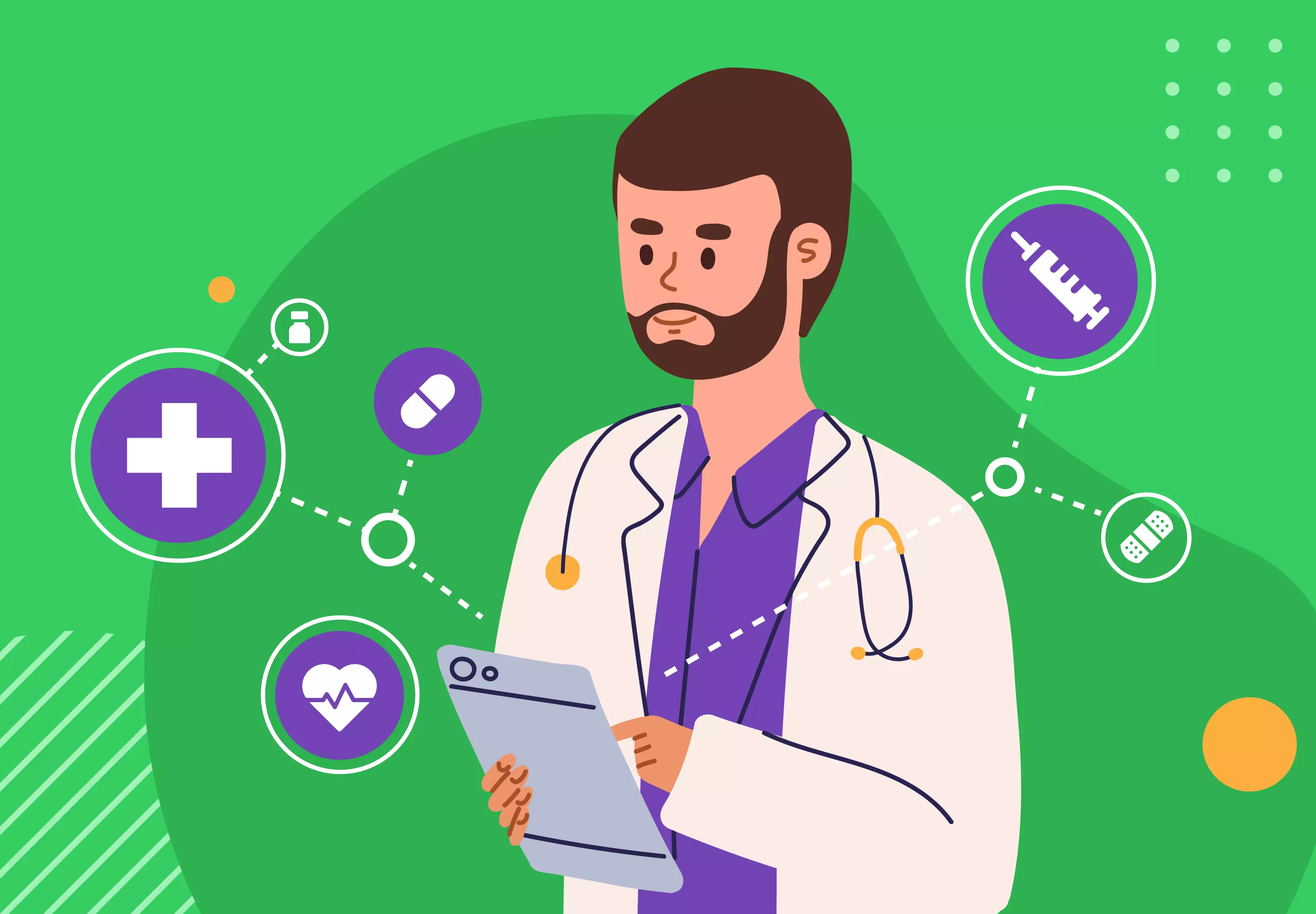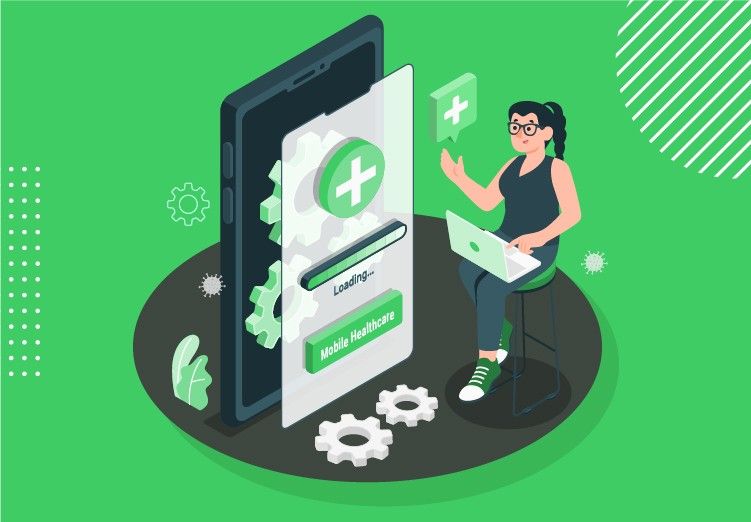Table of contents
One of the tools health systems and hospitals are turning to improve outcomes and reduce costs is remote patient monitoring (RPM) technology. This type of patient care extends the reach of physicians, enables a constant relationship between patients and caregivers, and offers providers a continuous stream of real-time health data.
And now, RPM devices are becoming smarter and more affordable. What’s more, considering the COVID-19 impact, solutions that allow remote monitoring grow in value and demand. So let’s explore this technology step by step, starting from the definition of RPM to highlighted types of existing devices, as well as current market statistics and the results of COVID-19 impact.
What Is Remote Patient Monitoring (RPM)?
Remote patient monitoring (RPM) is a healthcare delivery method that uses technology to monitor patient health outside of a traditional clinical setting. RPM refers to the specific technology used to electronically transmit information between patients and physicians, which serves as a powerful tool for patient monitoring at home.
How Does Remote Patient Monitoring Work?
Unlike other telehealth delivery methods, RPM does not require interactive audio-video and virtual visits. It simply requires technology that collects and interprets physiologic data and is actually very easy to use. 
Types of RPM Devices
Whether these are wearable heart monitors, Bluetooth-enabled scales, glucose monitors, skin patches, shoes, or belts, RPM non-invasive devices can acquire, transmit, process, and store patient data. Below you can read about some of the most valuable innovations:
Blood pressure monitor
Some blood pressure monitors take multiple readings to report daily averages. Home monitoring can assist in the early diagnosis of conditions like diabetes or kidney dysfunction which contribute to high blood pressure. It can also make healthcare delivery less stressful.
Continuous glucose monitor
Managing diabetes effectively requires continuous blood sugar monitoring, and here is where glucose monitoring devices can come into play, allowing you to:
- Monitor medication effects
- Track how diet and exercise affect blood sugar levels
- Demonstrate how stress or illness affect blood sugar levels
Medical alert systems
According to CDC, every year, 1 out of 4 older adults in the U.S. experiences a painful fall. Approximately 20% of those result in broken bones, head traumas, or other disruptive injuries that double the chance of another fall in the future.
Immediate care after a fall is critical, and that’s why remote patient monitoring devices are so valuable for seniors. These wearables can even help prevent death after a fall, as they enable immediate intervention by alerting the wearer’s clinician, emergency personnel, and their nearest caregiver or family member of what has happened.
Maternity care monitoring
Surveys consistently show that women with low-risk pregnancies prefer to minimize their number of OBGYN office visits, and remote monitoring enables this, meanwhile offering a high level of control over pregnancy.
Electrocardiography (ECG) devices Whether in handheld, wearable, or patch form, these devices can help to detect life-threatening conditions. ECG can catch symptoms of arrhythmia, myocardial ischemia, and ST depression.
Whether in handheld, wearable, or patch form, these devices can help to detect life-threatening conditions. ECG can catch symptoms of arrhythmia, myocardial ischemia, and ST depression.
These devices record electric impulses from a patient’s heart and transmit them to a clinician in real-time, allowing them to adjust care plans on the fly before a patient pushes themselves beyond their heart’s limit.
Medication monitoring
According to Consumer Reports, over half of the adults in the U.S. take prescription medications. Another study found that 60% of older Americans do not take their medications as prescribed.
So, medication monitoring can prompt patients to take their pills at the right time of day and at the prescribed dosage. It’s especially helpful for psychologists, whose patients often require continual prescription monitoring and adjusting.
Heart rate monitors
Portable heart rate monitors automatically record and transmit a patient’s heartbeat data during exercise, stressful events, and even sleep, helping clinicians detect both symptomatic and asymptomatic arrhythmias, as well as atrial fibrillation after cardiac ablation.
Smart scale
For patients managing congestive heart failure, gaining merely a couple of extra kilos could be a sign of increased water retention. When clinicians receive this information on their remote patient monitoring device, they’re able to act quickly: prescribe a diuretic, increase a current medication dosage, or call the patient in for a visit.
Pulse oximeter
These non-invasive clips are typically attached to fingers or earlobes in order to measure light wavelengths that determine blood oxygen levels. They are used by people with chronic heart or lung issues and are extremely helpful in detecting declining lung function which, these days, can signify COVID-19.
As you can see, remote patient monitoring devices take the stress out of healthcare and can help all kinds of specialists do their job more effectively and efficiently. But now let’s dive into statistical data to see if the technology is demanded and worthy of investments.
RPM Market Overview: Where Is It Heading?
According to Alltheresearch, the global remote patient monitoring market was valued at $975.0 million in 2020, and it is expected to reach $3,244.9 million by 2027, with a CAGR of 18.9% during the forecast period. But what are the reasons for such promising predictions? Let’s look at the data gathered from various studies on the use of RPM to see what difference it makes.

While patients’ trust and willingness to use RPM devices can be considered as a very good reason to adopt the technology, we can’t ignore the elephant in the room and avoid mentioning the impact of COVID-19.
COVID-19 Impact on the Market: Current Remote Patient Monitoring Trends
Covid-19 has significantly increased the groundwork for effective RPM usage by physicians and patients. And here are the two key drivers for RPM success that result from the pandemic:
- Physicians have been challenged to reinvent their practices in order to accommodate their patients during the Covid-19 pandemic, making RPMs highly sought-after solutions.
- It’s no secret that because of fear and the threat of contracting Covid-19 patients, people have started to avoid emergency rooms and doctors’ offices for non-Covid-19 health concerns. This is another driver that has accelerated the growth of the remote patient monitoring market.
When it comes to the latter, RPM devices provide patients with the ability to better manage their chronic conditions and understand contributing factors to their specific pathologies. Patients can use RPM to understand aspects of their health and seek out specific care, which, in return, reduces medical fees.
But the use of RPM goes even further, making business owners adopt the technology to assess their workers’ health and better gauge their safety. Also, considering the fact that most Covid-19 patients are asymptomatic, companies have started to invest in RPM devices to adjust their ready-to-work protocols during the pandemic. And all this resulted in a new RPM trend: the use of technology by businesses not related to healthcare.
For example, Starbucks has implemented a Covid-19 checklist for workers to complete and is requiring staff to log their temperature, using handheld clinical electronic thermometers before starting each shift.
Your fellow Emerline was also involved in the healthcare app development project related to the COVID-19 outbreak. While initially we were contacted by the client who wanted to use the Uber scheme for a medical app, the pandemic resulted in some significant changes to the initial idea. If you want to know how we adapted the solution to the world situation, you are welcome to read about the development of an Uber-like app for doctors in our portfolio.
Having vast expertise in the delivery of solutions for healthcare, we will be happy to answer all of your questions about RPM systems, functionality to include in the app to ensure its modernity, development timeframes, and cost. So whether you’re having an idea on a napkin or want to clarify some specific details regarding your project, feel free to contact us.



